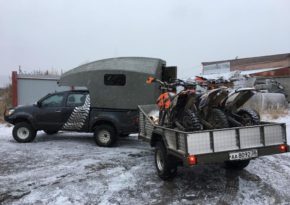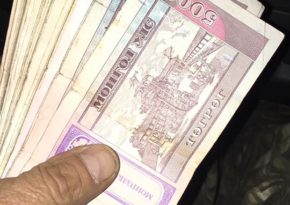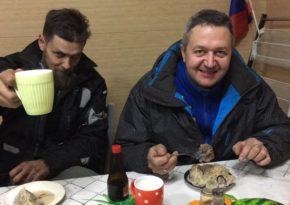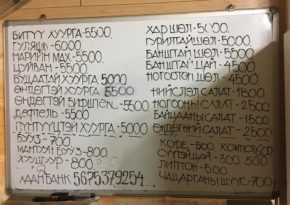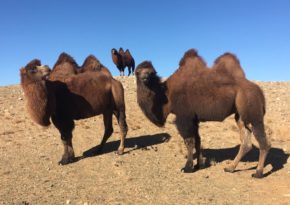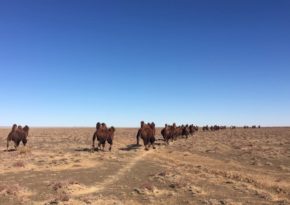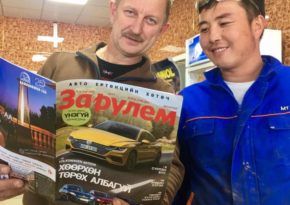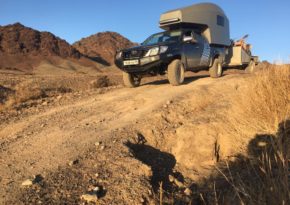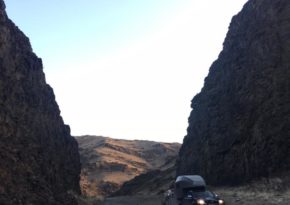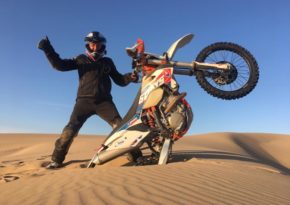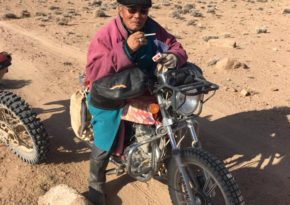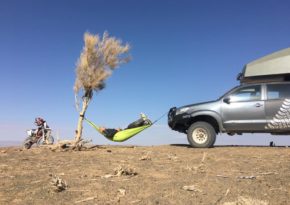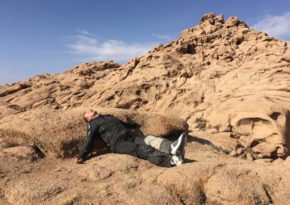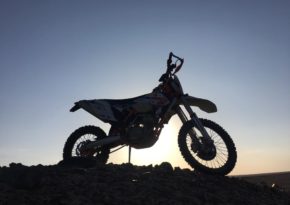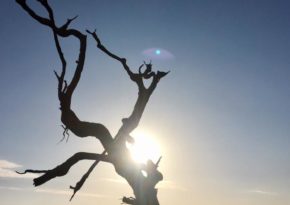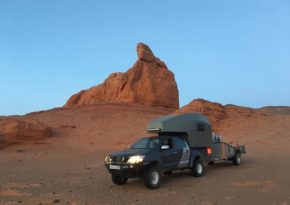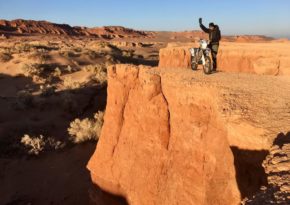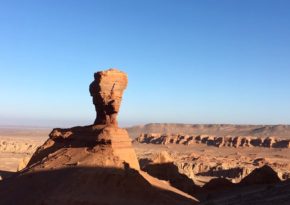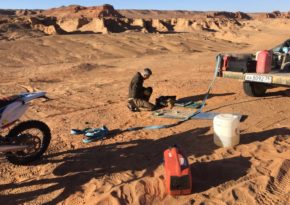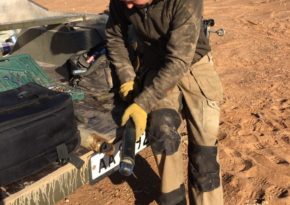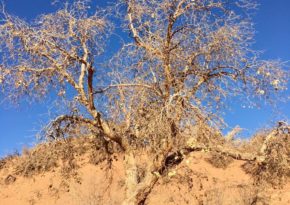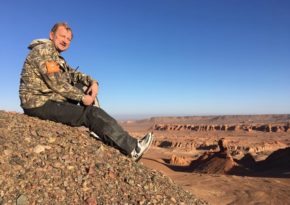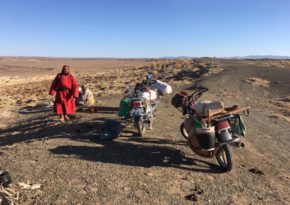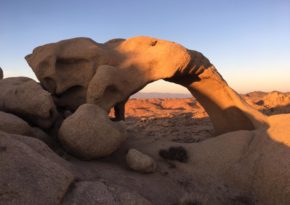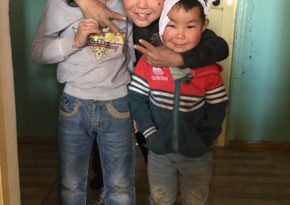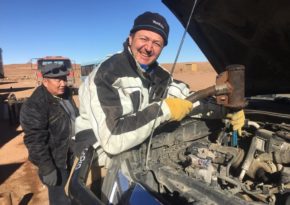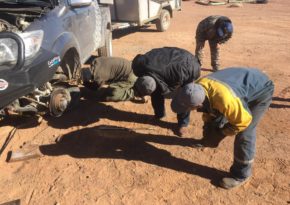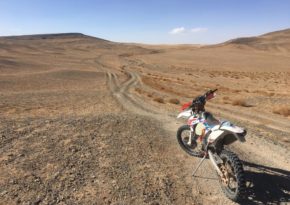A motorbike trip across Mongolia
Our journey to Mongolia had brought about adventures since the very beginning. Irkutsk did not want us to leave. At first we forgot to take one thing, then another occasion took place, then the air suspension on the trailer failed. As a result, we left at 7 p.m, when it started snowing and the temperature dropped below zero. The road turned into a skating rink and the long ascents became a real challenge. The slid down trucks were resting in ditches, blocking the highway, which provoked the traffic congestion. In addition, there was piercing wind and snow. We decided to break through along a deep ditch-roadside and consequently got bogged down in a swamp. Two hours of rescue operation with the participation of the shift KAMAZ and Ural trucks made a success.
At 2 a.m. we turned off the highway towards the shore of Lake Baikal, where we stayed overnight. What a great start!
The border with Mongolia was crossed in four hours, three of which were wasted on the Russian border crossing procedure. The paperwork referring to our equipment (which included motorbikes without license plates and vehicle registration certificates, a trailer with documents dated back to the 1970 and a car) took a long time.

We entered Mongolia at 12 a.m. and immediately exchanged roubles for tugriks (1 rouble equals 42 tugriks). Then we had dinner at a roadside café, which cost quite little, and headed for Ulaanbaatar.
The road to the capital of Mongolia appeared to be a single-lane highway paved with asphalt that is rather poor in quality.There were few cars in comparison with sheep and cows, herds of which were grazing on pastures along the highway.

The landscape was rather boring and monotonous. We saw steppes and lower mountains (or even hills, to be more precise), dusted with snow and rare yurts. By two 2 a.m. we had reached the small town called Darkhan, where we stopped overnight in a fairly nice hotel.
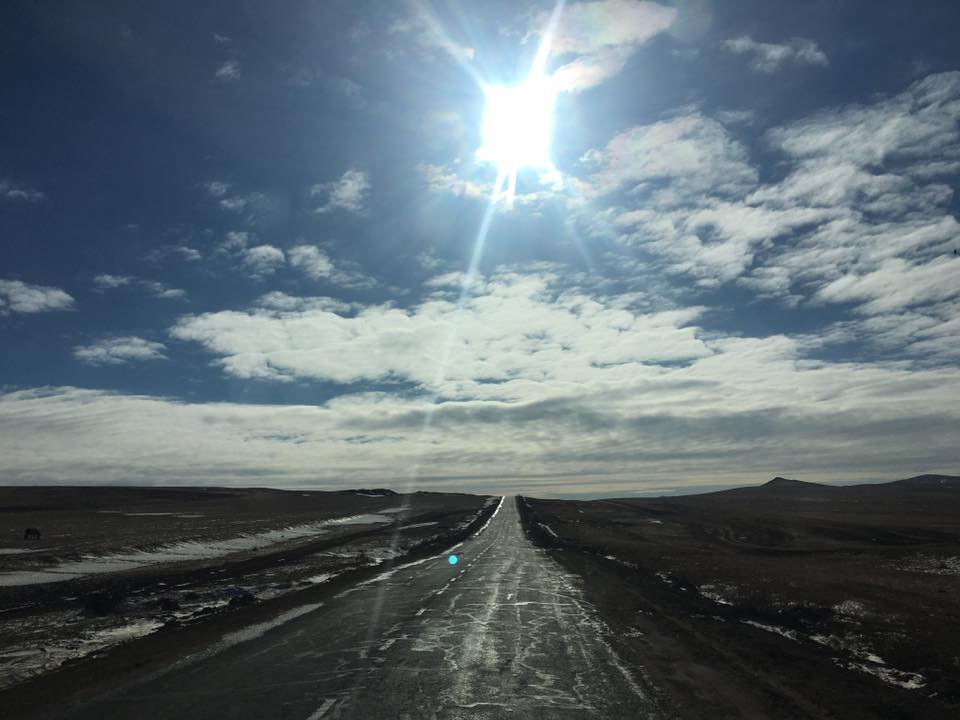
Ulaanbaatar is home to half of the total population of Mongolia and it is similar to Russia's typical regional town. Here you can find wide avenues, shopping malls, cafés and bars. But pawnshops and karaoke restaurants are the most popular establishments in this area. I suppose, since the Mongols like to drink, they wouldn't mind singing as well. And before such a night, they might have pawned something in a pawnshop.

At 9 a.m. we left for Dalanzadgad. The area of the Gobi Desert began. Until recently there were only steppe roads, or rather, directions. But a couple of years ago an excellent paved highway was laid, which stretched beyond the horizon of the boundless Mongolian desert. The sights around were quite boring and monotypic. Only occasional nomads' yurts, herds of sheep, cows, camels and a flock of ravens, which had made a feast on the corpse of a horse, diversed the gray-brown landscape of the central Gobi in a certain way.
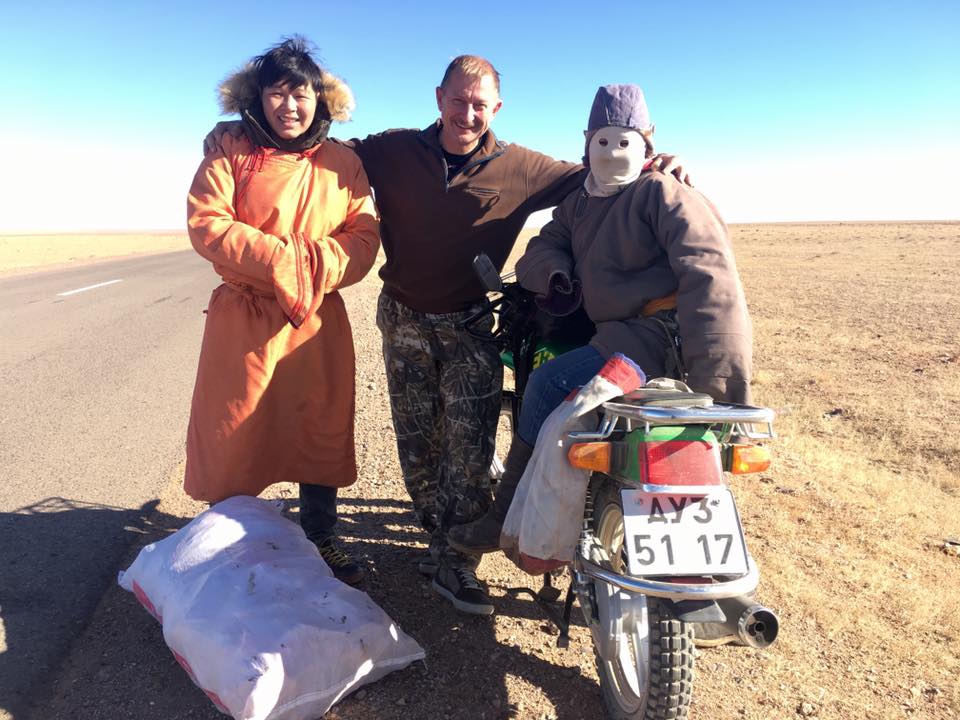
Dalanzadgad is quite a big city by local standards. There you can find banks, hotels, restaurants and even a theatre. This theatre is rather small, just a little bigger than a bus stop.
And there is also a park, which is half the size of a football field, with sculptures of dinosaurs at the entrance.
Having had a delicious lunch at Tsaini Gazar (it's the name of a restaurant chain of Mongolian canteens :)), we went to another settlement called Bayandalai, where the asphalt road ended. The following way was going to pass along dusty, rocky or ground roads, which crossed the steppe in different directions. Bayandalai is a very small and unremarkable settlement with a single primitive petrol station, which did not have any gasoline left.
As soon as we left Bayandalai, we encountered the mountains (or they were cliffs, to be more precise), which were dark brown, bare and cold. Everything got silent and dark. The temperature began to drop sharply. In Gobi the difference between the day and night temperatures reach 20°C and even more. We stayed overnight at one of the peaks, which offered a wonderful view of the gorge.
The Khongoryn Els are the sand dunes of the Gobi Desert, which stretched for an 80 km distance from east to west. This is the one of several sights in Mongolia, for which we went in for the trip. Finally, after driving the car for 1500 kilometers, we changed it into the motorbikes. And with them we experienced the adrenaline charge, plenty of emotions and indescribable delight!
You can simply fly by your light enduro over the sandy mountains, which are quite treacherous, though! The sand is fine, not like the one you can find on the beach. On the windward side it is more dense and on the opposite one it is as soft as flour. The majority of slopes are very steep, with an angle of more than 45°. So to reach the top, you need to keep on a high speed with the throttle handle open to the limit. When going down from the top, you also have to go with the gas open, which may seem psychologically difficult at first, but otherwise your motorbike is bound to bury its front wheel in loose sand and you will occasionally make a front somersault. The thing is, when you slide down the slope, an avalanche of sand floats down too, vibrating and creaking. In general, this technique resembles riding a snowmobile in the mountains.


Having overcome the sand dunes of the Khongoryn Els, we reached Savray village, where we planned to replenish water supply and refuel our motorbikes.
Savray is a typical Mongolian town with impicturesque dusty streets, along which the locals live in yurts behind the fences. There are several small shops, where you can buy vodka, cigarettes, coke, bread, matches and other household goods. Here you can also see a two-storey administration building, a shed with the inscription "Police", written in Latin letters for some reason, then a similar shed with the inscription "Bank", a school and a kindergarten.
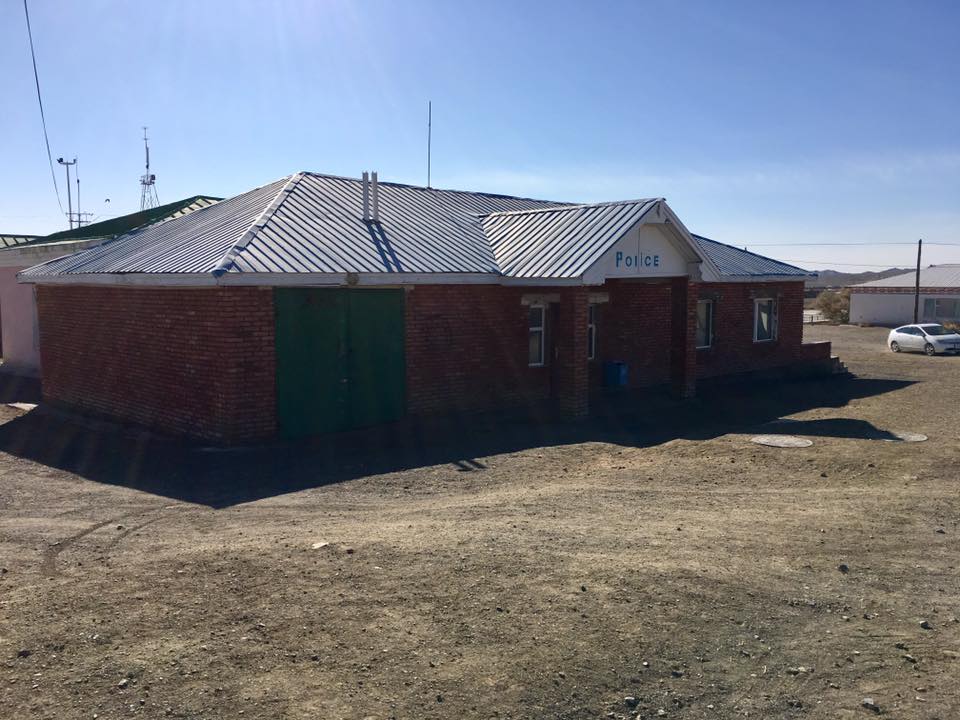
The only petrol station, equipped with the facilities that date back to the 70s, wasn't functionating! This fact made us feel stressed, since there were 130 km across the desert left until the nearest settlement and we might run out of gasoline! The path to Gurvantes appeared to be perfect for our motorbikes but challenged our Toyota with a trailer, because ditches, rubble and other features of a ground road did some harm to the car suspension. We arrived in the settlement at night.
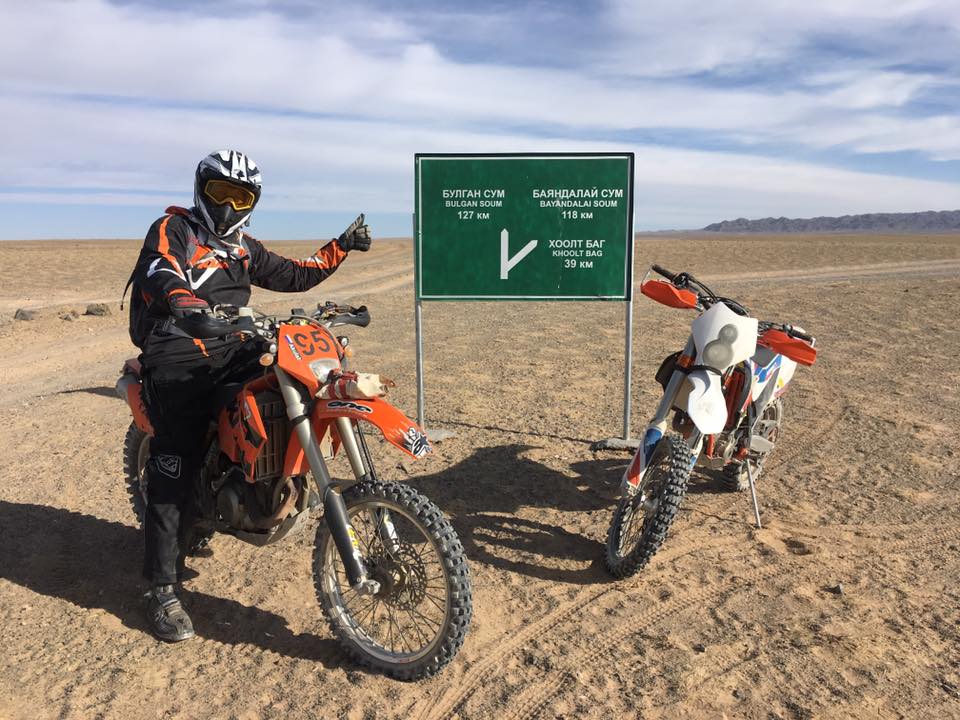
Gurvantes is a pretty decent town in terms of the Mongolian hinterland. The streets there are paved and one of them is even illuminated at night. But the most important thing for us were the three petrol stations, at one of which we refueled our vehicles with gasoline of octane number 92!
Having replenished the water supply from the well, we left the town and headed for Hermen Tsav. According to the navigator, the distance to the canyon was 130 km. Just 130 km! But it took us 6 hours. No, not because the road turned out to be very difficult but because it turned out to be so interesting and diverse that I tended to make regular stops to enjoy the surrounding beauty and take pictures.
I have read a lot of various reports about the trips to this unique place and they all said that it was quite difficult to get there. When you read such stories, your hair will stand on end! It's described as almost the road of death leading to hell. In fact, there is nothing terrible about it. It is a perfect track for light motorbikes and medium-difficult for heavy tourist enduros and off-road vehicles. What's more, it is quite deserted. During the whole day we met only one Mongol driving the UAZ and two motorbikers. And that happened when we were already not far from the city.
Our Toyota passed without any problem, in spite of being loaded with stuff and having a heavy trailer attached. Only in one section, when leaving the canyon, I had to lower the tires in order to overcome a steep sandy rise. In addition, some sharp stones and dry branches of saxaul increased the likelihood of puncturing the wheels, but we were lucky. However, the whole way may resemble the road to hell in the middle of summer, when the temperature in the desert rises to +40°C and higher.

We arrived in Hermen Tsav when the sun went below the horizon. At the beginning of the canyon we were met by two large rocks of bizarre shape, which looked like two giants guarding the entrance to a fairyland. And the next day we made sure that we went into a real fairy tale.

Hermen Tsav is a huge canyon, a crack on the earth's surface, which was formed millions of years ago as a result of a tectonic shift. This place is said to be the birthplace of dinosaurs, as the numerous remains of these prehistoric animals were found there. Since the canyon is located in the desert far from civilization, you can easily find some dinosaur bones even now if you search for them carefully in places, where streams, flowing from the mountains after rains, have eroded the soil.

Hermen Tsav is also famous for its unique terrain. Over the millennia water and wind have created a fantastic landscape. The canyon itself is a chain of smaller canyons, along the bottom of which you can go on foot or by SUV (in some sections), but a light motorbike would be the best choice. If you ride an enduro, you can cover almost the entire territory in a day, while being able to climb into narrow crevices, jump over gullies to follow the steep sandy and rocky slopes to the very tops of the cliffs, from where you'll experience the most gorgeous views!

The hundreds of photos taken by us, of course, will not convey our emotions and those incredible beauties that we have seen!
The next morning began with the repair of our Toyota. It needed replacing the leaking shock absorber. After having breakfast consisting of a cup of Lipton tea and some sweets, we got to work. It took us more than two hours to invent a device from the tools that we had, which would be aimed at pressing out the shock absorber sleeve. By the way, our calculations concerning food supplies somehow went wrong. Only some sweets, sugar, salt, a kilogram of onions and a jar of jam were left. However, in the morning we occasionally found a can of stew in a pile of junk under the table, which we were incredibly happy about and decided to have it for dinner.


We returned from Hermen Tsav to Gurvantes by following the same track back. The hotel where we had stayed overnight three days before turned out to be locked. After a short search we found another inn, a very small one, which offered three rooms with a shared toilet. Three local "priestesses of love" stayed there in one of the rooms and they were constantly visited by guests. As soon as we settled, one of them, a middle-aged woman with her lips maked-up brightly, looked in our room and asked some question in Mongolian. Not having received the expected answer, she left us in a bit upset mood.

The following morning, after having lamb soup and tea with milk for breakfast in Tsaini Gazar, we went to Savray and further up to the Khongoryn Els. We stayed overnight on the bank of a stinking stream, which flows through the canyon along the sand dunes. Horses, camels and saigas come to this spring to drink. This is one of the few locations in the Gobi, where water comes to the surface of the land and it is a vital place for animals.

Bayanzag Canyon, which is located a few kilometers from Bulgan village, is one of the iconic places of the Gobi. I was here two years ago and the canyon really impressed me! There are bright orange sandy rocks, which are very unusual, as well as in Hermen Tsav. But after Hermen it won't seem that big. This canyon is much smaller and it does not take you much time to explore it, especially when you go by motorbike.
And, what's more, on our way to Bayanzag we got into a sandstorm. It is quite an unpleasant situation.A very strong wind carries sand, dust and branches across the desert and nothing is visible. The sky merges with the earth, you don't see the sun at all, everything is grey, sand gets into everything and creaks on your teeth. It was good that such an apocalypse did not last long, even less than for half an hour.

From Bayanzag we continued our journey through the desert in the direction of Tsogdovo village. The navigator didn't show any route, so having turned the "straight ahead" mode on, we went across the desert, following the course and changing one field road to another. The distance until the asphalt road is a little more than 100 km in a straight line. It may seem not so far away, but we had a problem again, as the upper mount of the shock absorber on the Toyota broke off.

The Mongolian roads challenge even reliable equipment. It was impossible to drive further with such a breakdown, but we were lucky because in the middle of the desert we occasionally came across a small gold mining artel and the workers had a welding machine in their garage. Having disassembled the suspension with the help of an improvised tool, we did all the repair needed and assembled everything back, but it took us about five hours. We headed to Tsogdovo just when the huge red moon was slowly floating out of the horizon.
Here you are another couple of videos from Hermen Tsav Canyon, the Motherland of the dinosaurs. Watch and enjoy!
Передвигаться по пустыне на легком мотоцикле класса «эндуро» — одно удовольствие! To travel across the desert by a light motorbike of the Enduro type is a pleasure! In my opinion, it is the best, or rather, the most exciting means of transport for this area. However, it appears this way only in case a car with supplies of fuel, water, food and other necessities goes with you in the same direction. :)
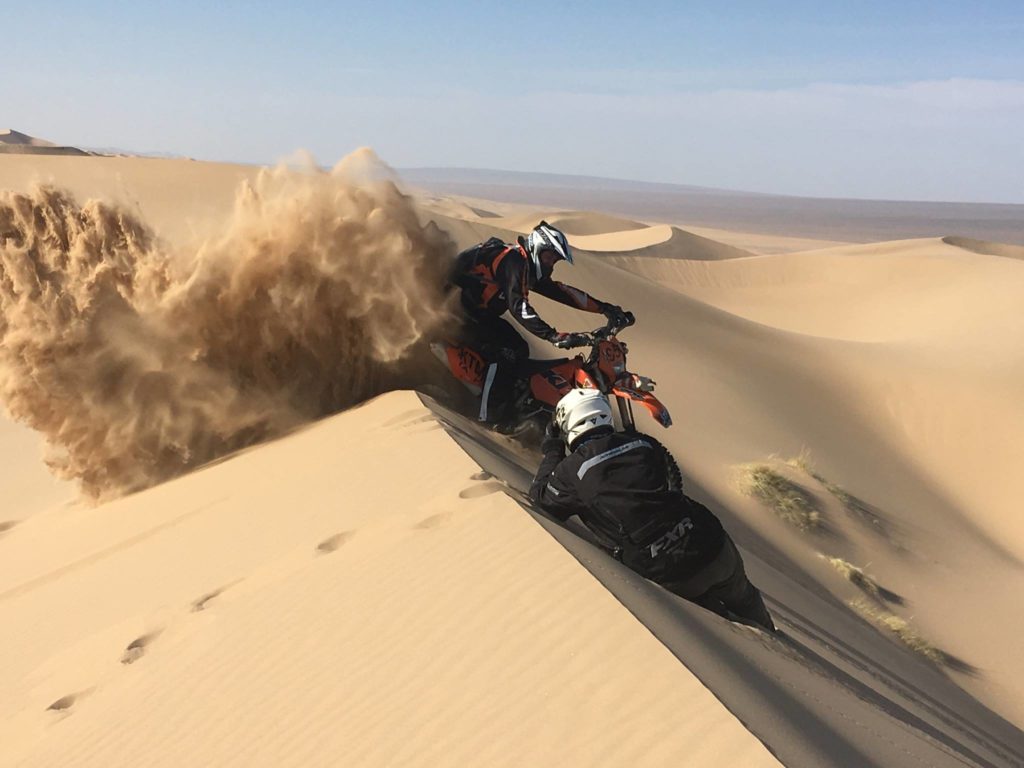
What is unusual is that there are no restrictions for this type of motorbike in the desert: you can move in any direction. First, you choose a destination with the coordinates of some place and then just follow the compass, while jumping over gullies, climbing sand dunes and gentle slopes of the low mountains.
The average distance that we covered in a day, including long stops for lunch, taking pictures, etc., equaled 120…150 km. We might have overcome more, but it wouldn't make much sense, as our support car with a trailer was going much slower.
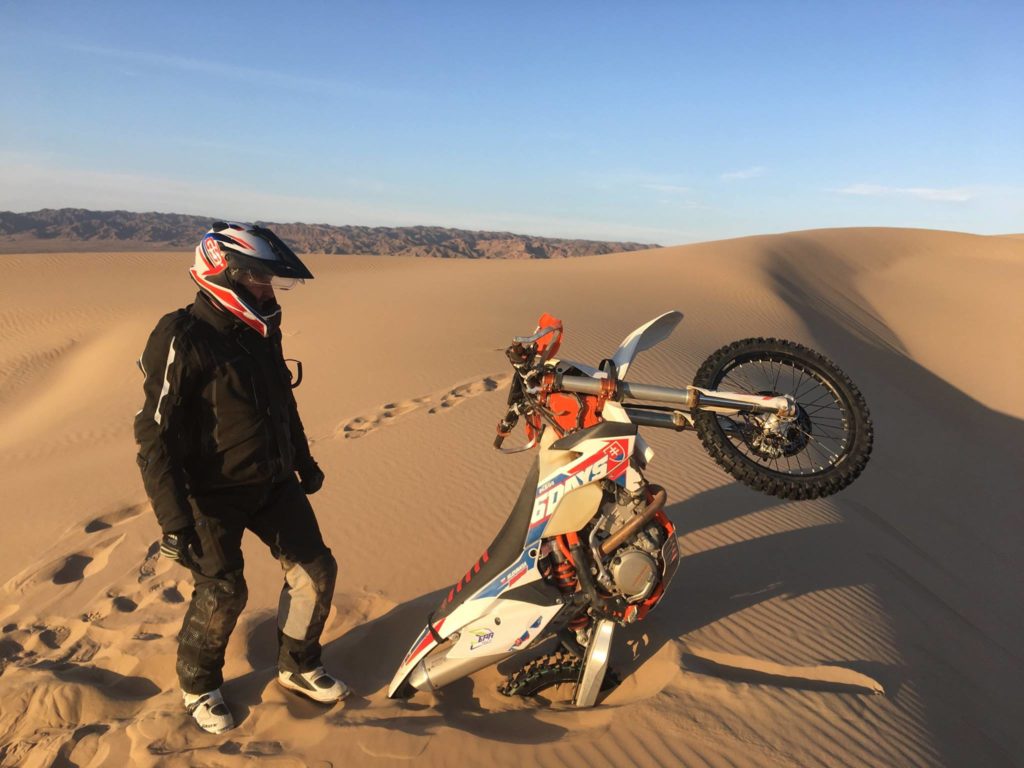
But when you go over the rough terrain, you must be constantly on the alert. You have no time to relax unlike in case of driving the car or riding the motorbike along the asphalt road. In fact, you regularly come across quite deep gullies, large stones and saxaul bushes (and hitting these natural obstacles at high speed can lead to a fall). I had experienced two such unpleasant moments. The first one took place during a prolonged ascent to a sand dune, when I did not calculate the speed right and flew over the ridge in hope that there would be a flat top further, however there was almost a sheer drop on the opposite side. The flight was protracted and the landing was hard, then I demonstrated a somersault over the steering wheel and, after flying a few more meters, the motorbike fell on my back. The hit was so strong that I couldn't take a breath in for about two minutes. My protection equipment and helmet saved me from fractures and serious injuries. The second time occurred at sunrise, when I decided to go a bit further from the place of our overnight stay to take some beautiful pictures quickly. I put on neither the equipment, nor the boots, and simply stayed in slippers. It resulted in the slipper, pierced by a saxaul branch, and a sharp stick, stuck out of my foot.
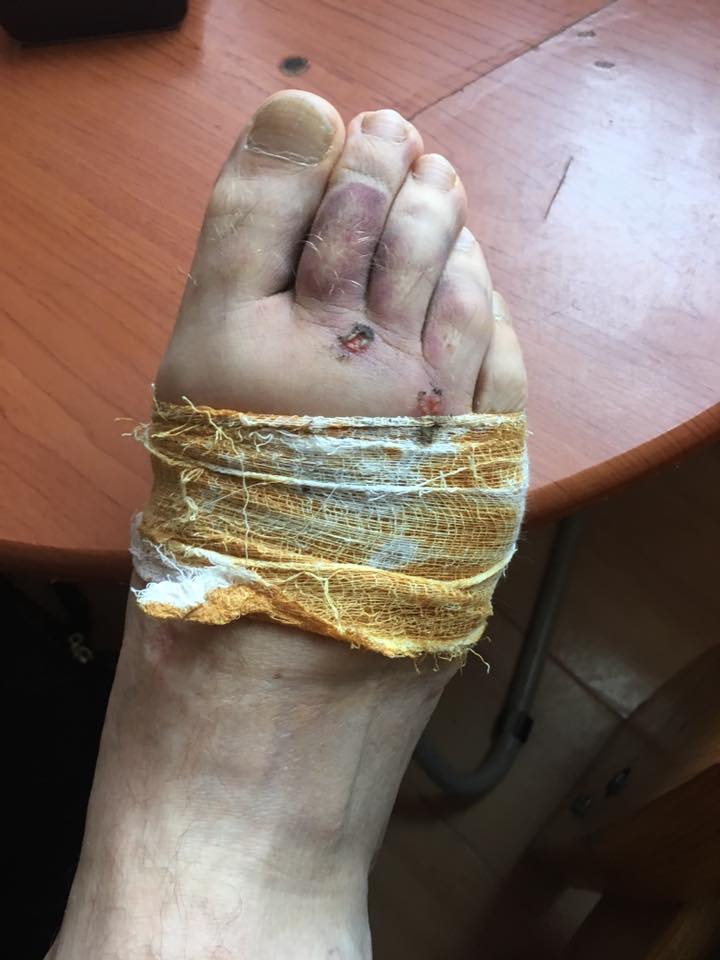
The physical fatigue tends to accumulate and after 4 or 5 days of such a journey you had better make a stop for a day, preferably in some more or less civilized place, in order to have an opportunity to wash your clothes, take a shower, relax and put everything in order.
Let me sum up everything:
The beginning date: 25.10.2017
The end date: 8.11.2017
The participants: Andrew Valikov, Oleg Akulshin and Dmitry Yaskin.
The route: Irkutsk — Ulan-Ude — Ulan-Bator — Mandal-Gov — Dalanzadgad — Khongoryn Els — Savray — Gurvantes — Hermen Tsav— Gurvantes — Savray — Bulgan — Bayanzag — Tsog-Ovo — Ulan Bator — Ulan-Ude — Irkutsk.
The means of transport: Toyota Hilux car with a residential module and trailer, KTM-350, KTM-450 and Yamaha WR-450 motorbikes.
The mileage: 4.200 km (about 1,000 km of which we went by motorbikes along the unpaved roads, desert and sand).
The air temperature: from -5°C to +20°C.
The goals and objectives of our journey:
1. To see the main sights of southern Mongolia, the Gobi desert and get acquainted with the local residents' way of life.
2. To improve the light motorbike driving skills in terms of difficult off-road conditions and sandy terrain.
3. To get to Hermen Tsav Canyon and try to find the remains of prehistoric creatures, dinosaurs.
4. To escape from the clutches of "civilization" and all this hustle and bustle for a couple of weeks.
Our goals and objectives of the trip have been fully fulfilled.
Some various unforeseen situations happened on our way. They were: the failure of the rear shock absorber on the Toyota car, the breakdown of the front shock absorber attachment, a night collision with three horses on the highway near Ulaanbaatar (the car was a bit damaged, but the horses were safe and sound), some more minor injuries were sustained when falling from a motorbike and also due to one participant's neglection of the personal protective equipment. All the problems that had arisen were successfully solved on the spot and did not prevent our plans from being completed.
Video
A motorbike trip across Mongolia
 Cap-travel.ru
Cap-travel.ru